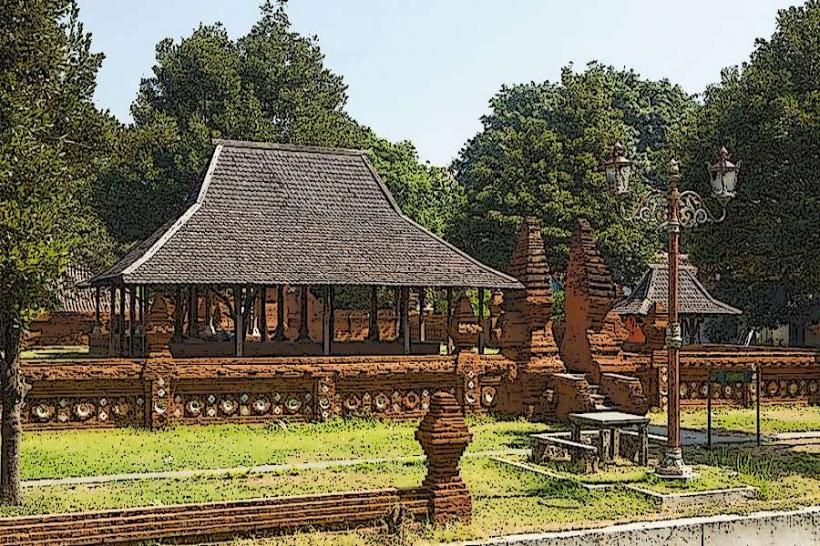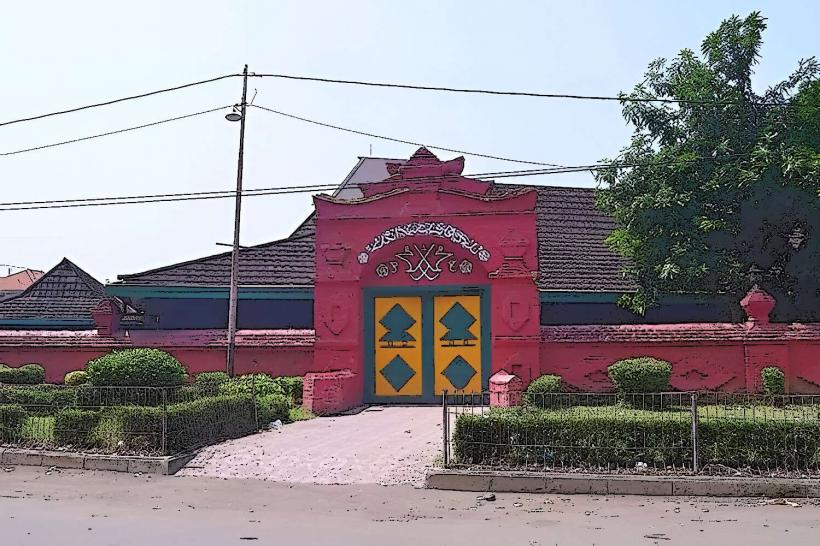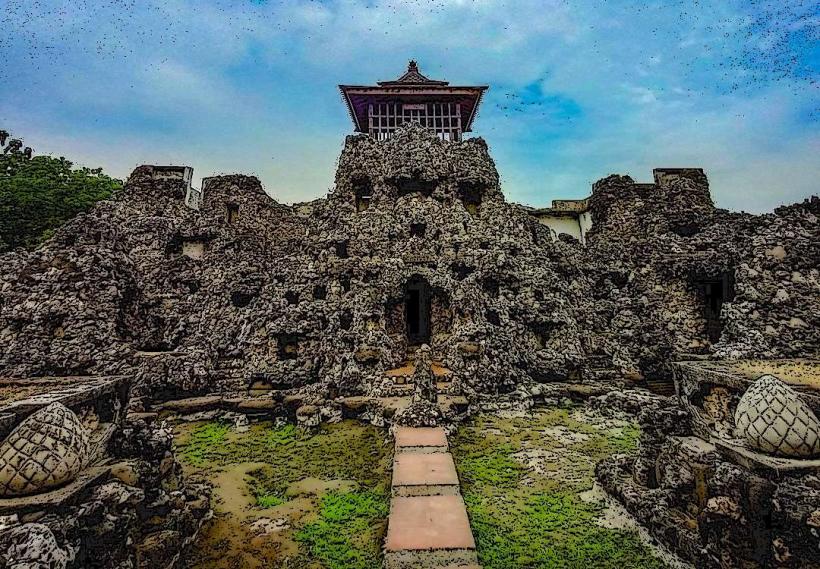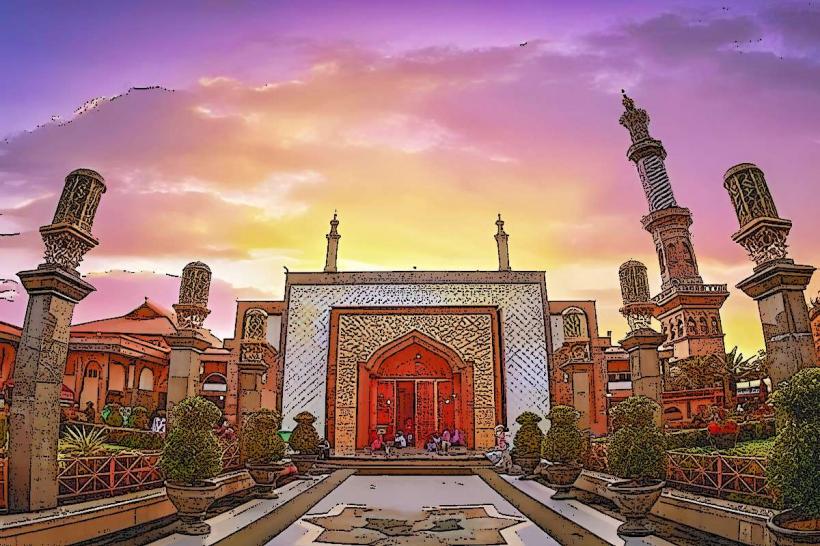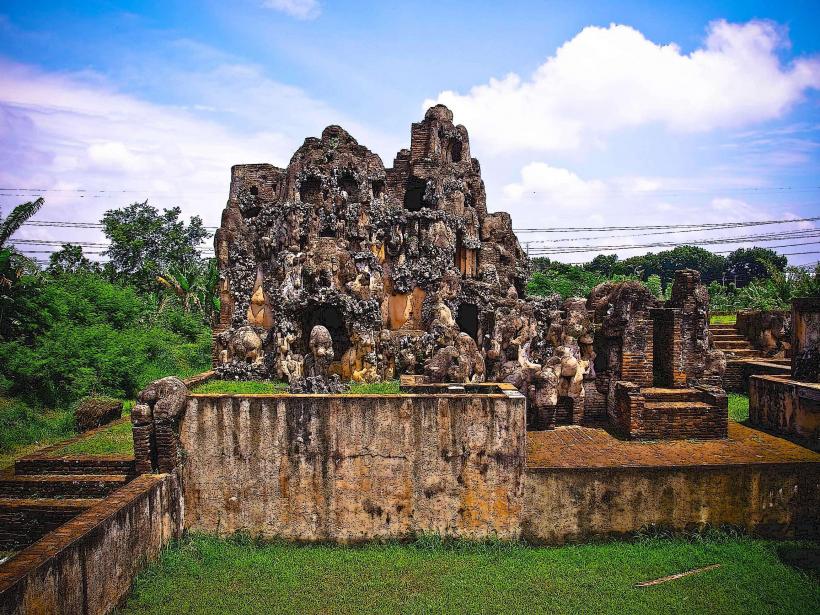Information
Landmark: Batu Luhur TempleCity: Cirebon
Country: Indonesia
Continent: Asia
Batu Luhur Temple is a historical site located in Indonesia, specifically in the region of West Java, near the city of Bogor. The temple complex is part of the larger cultural heritage of Indonesia and is considered a significant Buddhist site, though it is somewhat less known compared to other temples in the country.
Here are some key details about Batu Luhur Temple:
1. Location and Access
- Batu Luhur Temple is situated on a hill, providing a panoramic view of the surrounding landscape. The site is located in the Gunung Salak (Salak Mountain) area, which is known for its cool climate, lush forests, and stunning natural beauty. This location has made it a popular destination for those interested in both history and nature.
- Visitors can reach the temple through a series of hiking trails, which can be somewhat challenging but offer a rewarding experience due to the scenic views along the way.
2. Historical Background
- The Batu Luhur Temple is thought to have been built during the 8th century, likely during the era of the ancient Sunda Kingdom, which ruled the region. The temple is not as famous as some other Buddhist temples in Indonesia, such as Borobudur or Prambanan, but it remains an important site for understanding the history of Buddhism in Indonesia.
- The temple is believed to have been constructed for religious and ceremonial purposes, and it likely served as a site for meditation and rituals.
3. Architectural Features
- The Batu Luhur Temple is characterized by traditional Buddhist architectural elements, including stone carvings, reliefs, and a central platform that may have been used for rituals or offerings.
- One of the unique features of the temple is its integration with the surrounding landscape. The temple is built directly into the natural rock formations, making it an excellent example of how ancient builders used their environment to create religious spaces.
- The temple also has several statues and carvings, many of which are damaged or weathered due to the passage of time, but they still provide insights into the artistic style of the period.
4. Cultural and Religious Significance
- Batu Luhur Temple is believed to have been a place of worship and meditation, likely used by Buddhist monks and practitioners of the time. The site would have played a role in the spread of Buddhism in the region.
- The presence of stone carvings and other religious symbols suggests that the temple was part of a larger religious complex that may have included monastic dwellings, meditation halls, and other structures related to the practice of Buddhism.
- While the temple is not as well-preserved as some other temples in Indonesia, it still holds cultural and historical significance for those interested in the spread of Buddhism in Southeast Asia.
5. Current Condition
- Over time, the Batu Luhur Temple has experienced significant deterioration. Many of the carvings and structures have been weathered or eroded by the elements. Despite this, efforts have been made to preserve the site and maintain its cultural importance.
- Archaeological studies and preservation work continue at the site, although Batu Luhur is not as heavily developed as other temples in Indonesia, such as Borobudur.
6. Nearby Attractions
- The temple is located within the vicinity of Gunung Salak National Park, a protected area known for its biodiversity and hiking trails. Visitors to Batu Luhur can also explore the natural beauty of the park, including waterfalls, dense forests, and diverse wildlife.
- The city of Bogor, with its famous botanical gardens and colonial-era architecture, is also nearby and offers additional cultural experiences for visitors.
Conclusion:
Batu Luhur Temple, while not as famous as other Indonesian temples, offers a unique glimpse into the region's Buddhist history and architectural heritage. Its integration with the natural environment and its relatively remote location make it a fascinating site for history enthusiasts and nature lovers alike.

